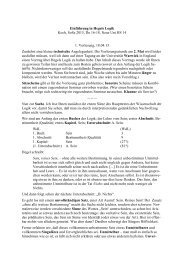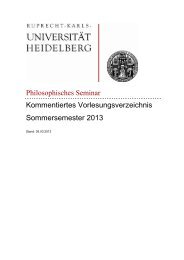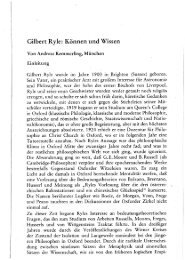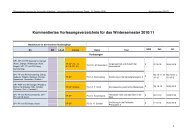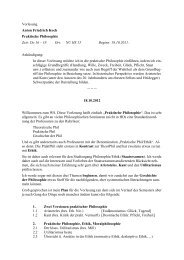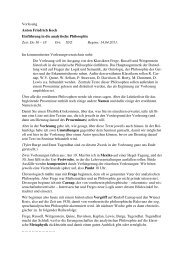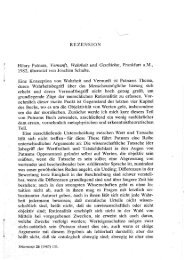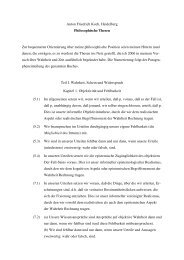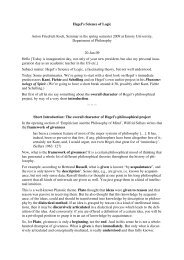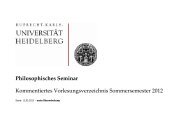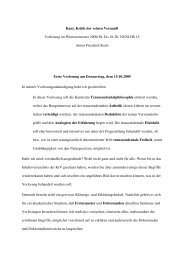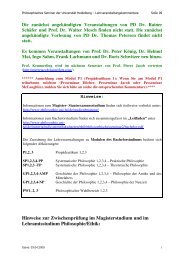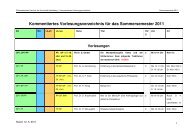KANT'S CRITIQUE OF TELEOLOGY IN BIOLOGICAL EXPLANATION
KANT'S CRITIQUE OF TELEOLOGY IN BIOLOGICAL EXPLANATION
KANT'S CRITIQUE OF TELEOLOGY IN BIOLOGICAL EXPLANATION
You also want an ePaper? Increase the reach of your titles
YUMPU automatically turns print PDFs into web optimized ePapers that Google loves.
Introduction 129<br />
contradiction in the concept of natural purpose must be based on a<br />
(false) presupposition not excluded by the Critique of Pure Reason.<br />
In the four-part antinomy of the Critique of Pure Reason, the<br />
contradiction between thesis and antithesis exposed the unjustified<br />
presupposition that the world is a thing in itself and provided an<br />
indirect proof that it is merely an appearance. In the Dialectic of<br />
teleological judgment Kant construes a contradiction between two<br />
assertions of reflective judgment in order to expose as false an<br />
unjustified presupposition of empirical science. This presupposition<br />
is the basis of the reservations about the concept of natural purpose<br />
and only becomes clearly visible when the problem is brought to a<br />
head and formulated as an explicit contradiction. We shall see that<br />
this presupposition is precisely the one we came across in the analysis<br />
of the antinomy of division: the assumption that the parts are the<br />
condition of the whole, but that the whole is not the condition of the<br />
parts. In the Dialectic this equation of causal explanation as such<br />
with the reduction of a whole to the properties of the parts, that is,<br />
the equation of scientific analysis of a phenomenon with its dissection<br />
into component parts will be called "mechanism" by Kant. It is<br />
the hypostasis of this mechanistically conceived causality as the<br />
only kind of efficient ("real") causality that occasions the<br />
appearance of a contradiction in the concept of natural purpose. The<br />
resolution of the antinomy leads to a relativization not of causality<br />
itself, but of mechanism or reductionism – without however<br />
seriously calling into question its status as the only legitimate form<br />
of scientific explanation in general.<br />
The text of the Dialectic consists of ten two-to-five page numbered<br />
sections (§§69-78). A fairly dependable survey of the course of<br />
Kant's argument can be given by listing the section-headings. At<br />
least it will prove to be one of the peculiarities of the interpretation<br />
developed here, that it interprets Kant to be arguing in each section<br />
more or less just what he announces in its title. The headings read:<br />
§69 What an antinomy of judgment is.<br />
§70 Presentation of that antinomy.<br />
§71 Preliminary to the solution of the above antinomy.<br />
§72 On the various systems concerning the purposiveness of<br />
nature<br />
§73 None of the above systems accomplishes what it alleges to<br />
accomplish.



